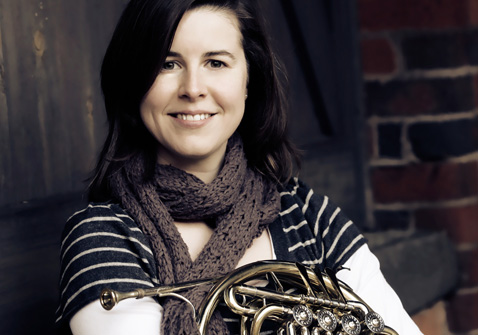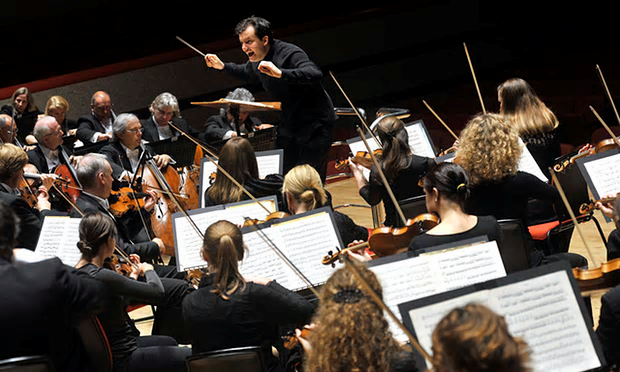Birmingham audiences are a supportive bunch. There was never much likelihood that they’d greet Andris Nelsons’s first Birmingham appearance since he departed for Boston in 2015 with less than the same warmth that they keep for other former CBSO music directors. Even so, he must have been gratified to walk out to a capacity audience – for a programme of Bruckner and Maxwell Davies – and a 30-second ovation, complete with a couple of cheers, before he’d given so much as a downbeat.
Of course, the CBSO has already embarked on a whole new adventure, and with an artist as exciting as Mirga Gražinytė-Tyla in charge, there’s no need for any lingering regret at what many still see as Nelsons's premature departure. Intriguingly, he opened this homecoming concert with an area of repertoire for which he never showed much enthusiasm while in Birmingham (though he conducted it thrillingly, when pushed) – contemporary music. Well, contemporary-ish. Håkan Hardenberger was the soloist in the late Sir Peter Maxwell Davies’s Trumpet Concerto of 1988.
The strengths that make Nelsons’s current Covent Garden Rosenkavalier so glorious – his ability to infuse an orchestral texture with warmth, to draw out lines and generate a sense of organic growth – were immediately audible, as well as a fresh (and welcome) sense of colour and clarity: Max’s northern landscape drawn in charcoal and crayons. There was a bracing quality about Nelsons’s reading, and Hardenberger – who initially sounded less than usually surefooted – launched himself defiantly at the music; throwing his head back, apparently poleaxed, at the work’s stormier climaxes. But he can still charge a melody with meaning, whether powering through a rainshower of bells, grinding against the altogether more menacing sheen of the CBSO’s trumpet section, or chanting a muted prayer amidst keening violins in Maxwell Davies’s central vision of St Francis preaching to a wheeling flock of Orcadian gulls and skuas.
 If that was something of a surprise success, there was every reason to expect a lot from Bruckner’s Fourth Symphony, the “Romantic”. Nelsons’s credentials in Wagner might be presumed to give him a headstart in Bruckner, and in the Alpine clarity of Symphony Hall’s acoustic (sorry, London) it’s possible to create a truly colossal range of dynamics. No fear: Nelsons's grasp of Bruckner’s symphonic architecture is too sophisticated for such cheap wins. With a modest, precise-looking beat he let the music stride forward in eloquent, articulate paragraphs, allowing incidental motifs and twists of harmony to find their own space, and pointedly declining to overemphasise the first movement's more spectacular geographical features. It felt almost classical.
If that was something of a surprise success, there was every reason to expect a lot from Bruckner’s Fourth Symphony, the “Romantic”. Nelsons’s credentials in Wagner might be presumed to give him a headstart in Bruckner, and in the Alpine clarity of Symphony Hall’s acoustic (sorry, London) it’s possible to create a truly colossal range of dynamics. No fear: Nelsons's grasp of Bruckner’s symphonic architecture is too sophisticated for such cheap wins. With a modest, precise-looking beat he let the music stride forward in eloquent, articulate paragraphs, allowing incidental motifs and twists of harmony to find their own space, and pointedly declining to overemphasise the first movement's more spectacular geographical features. It felt almost classical.
this performance of a Bruckner symphony was still, remarkably, a kind of chamber music The Andante evoked Schumann in its inwardness and warmth: Nelsons has the ability to create forward momentum amid a feeling that there’s all the time in the world. He tied the tempi of the scherzo’s slower passages back to the earlier movements, and only with the first climax of the finale did he finally unleash the full power and scale of sound that this orchestra can create in this hall - an overwhelming moment of arrival. From that point on, not even Nelsons could bring absolute coherence to Bruckner’s stop-start ramble of a finale, but the journey towards those mighty final chords was certainly beautiful. Rich string textures built from the basses up, luminous woodwinds and cellos and violas that can sing – really sing – the heart out of Bruckner’s yearning second groups: we’ve come to expect all this when Nelsons conducts the CBSO. The honeymoon never really ended between this band and this conductor. On this showing they’re still rather more than just good friends.
But special praise goes to principal horn Elspeth Dutch (pictured above right), for her superbly controlled and expressive playing from opening highwire walk to final vaulting calls. And the return from retirement of timpanist Peter Hill, whose calm authority and unmistakable tone were the bedrock of the CBSO’s sound under Rattle, Oramo and Nelsons, only added to the feeling that this performance of a Bruckner symphony in front of 2,000 people was still, remarkably, a kind of chamber music: something understood. Both players were duly acknowledged by Nelsons amid the final applause.














Add comment